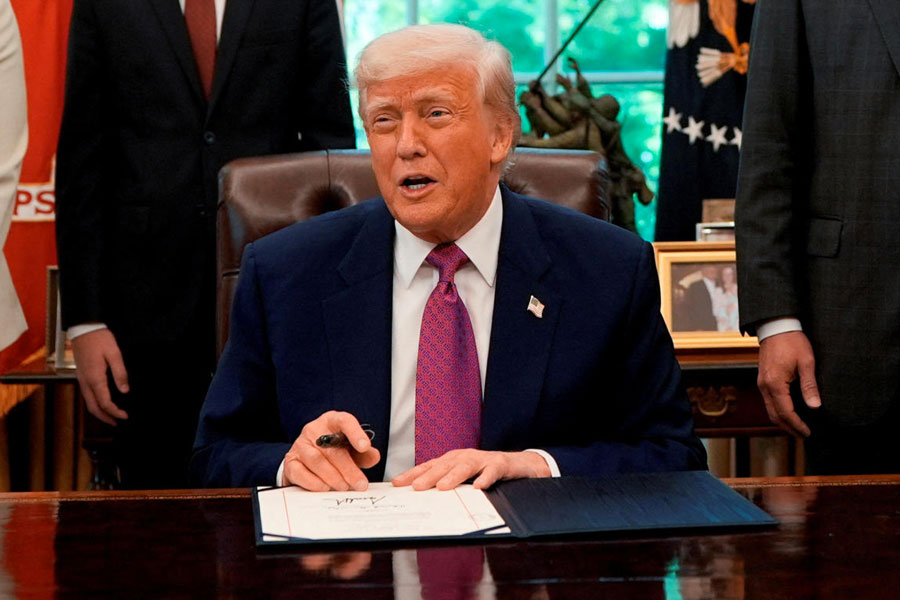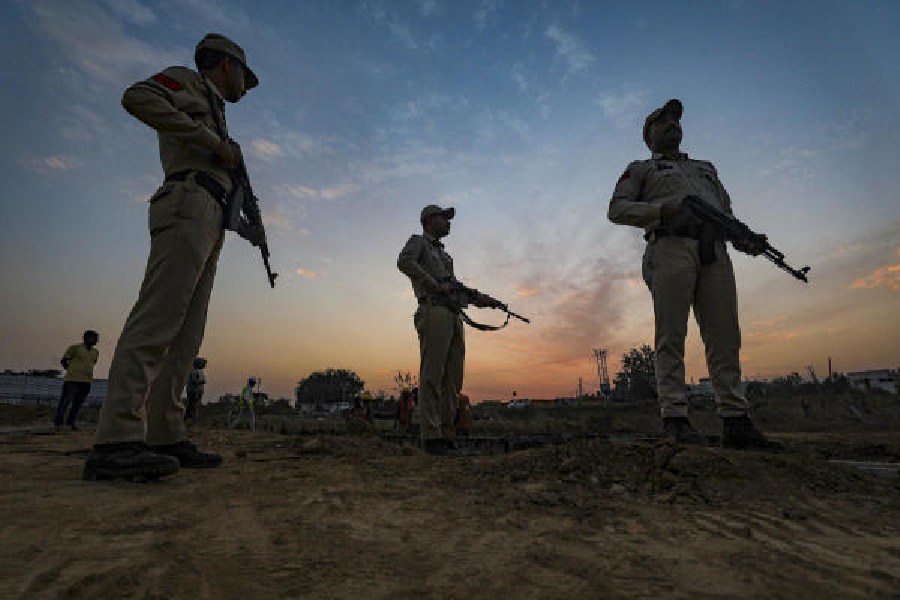 |
 |
| A linsang, not the animal caught on camera in Sikkim; and file picture of a red panda |
Gangtok, Aug. 9: The World Wildlife Fund has claimed to have captured on camera for the first time in Sikkim a spotted cat that is rarely seen.
A camera-trap exercise to count the number of red pandas in Sikkim also caught images of the linsang in the Barsey Rhododendron Sanctuary in the West district. There is no independent confirmation yet on the WWF’s claim.
“Linsang is a spotted animal with a slender body and is rarely seen in Southeast Asia, eastern Nepal and the Himalayan region in the Northeast. The animal is listed in Schedule 1 of the Wildlife Protection Act, 1953,” said Parthasarathi Ghosh, a senior project officer with the World Wildlife Fund (WWF) India.
Schedule I animals are the most protected in the wild because these are some of the rarest. Schedule I protection for the linsang means it is as protected as the tiger. Killing any animal listed under Schedule I also invites maximum fine and punishment under the act.
The WWF had placed eight cameras in the Barsey reserve as part of the Red Panda Project, launched in 2008, to count the number of such pandas in the wild.
The images of the linsang, a carnivore, were captured by three different cameras in the forest.
“There are three images of linsang captured in the cameras on different dates. However, it is yet to be confirmed whether the three images are of a same animal,” Ghosh said. WWF officials said linsang had been seen by local people several times, but there had been no images so far.
“These are the first pictures of the linsang in Sikkim. It would help in studying the habitat and other aspects of the animal,” said a WWF India official. Ghosh said the linsang move around in the forest at night and it was difficult to spot the animal during daytime. “It hides in bushes during the day. Rarely do people see lingsangs move around during daytime.” He said the animal has is the size of a civet cat. “It feeds on small mammals such as rats.”
The WWF officials said the population of the red panda had so far been estimated to be 300 in Sikkim. “This is just a conservative estimate and more forests are to be surveyed to reach the exact number of the red pandas in the state,” said Ghosh.
Eight cameras were installed in the Hiley, Sallery, Dev Nigaley Dhap, Thulo Dhap and Kalijhar areas in West Sikkim as part of the survey.
The Pangolakha wildlife sanctuary in East Sikkim is also covered under the project, the first exercise to conduct the census of the red panda in Sikkim.
A camera trap is the size of a note book and operates on batteries. It has a chip inside and whenever there is movement in front of the camera, the image is captured. The camera automatically uses flash at night.
The Sikkim forest department has decided to take a number of measures for the conservation of the red panda.
“Once we get a proper idea of the red panda’s habitat in Sikkim, we can regulate human activities there. We are planting bamboo and wild fruit trees on which the red pandas feed. Besides, we are creating water sources for the red panda and carrying out immunisation camps for domesticated animals so that they don’t spread diseases in the forest,” said divisional forest officer (wildlife, East) M. Ravi Kumar.










